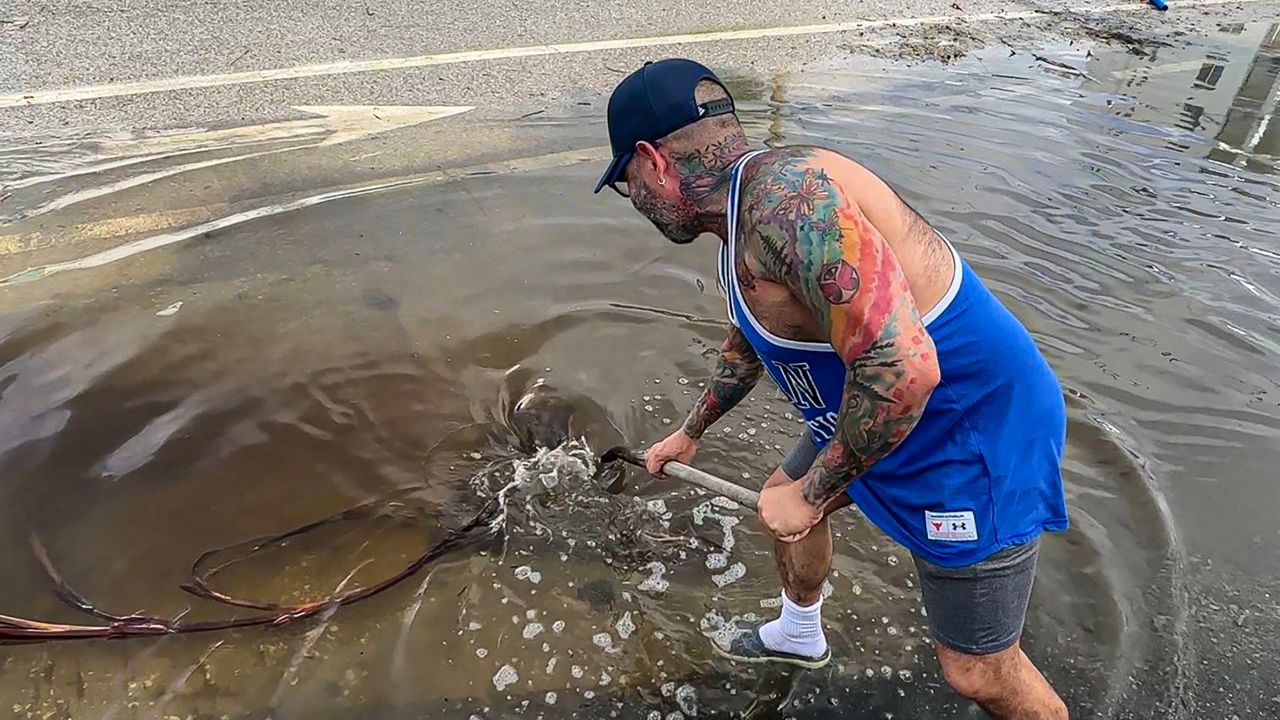ST. PETERSBURG, Fla. — Pinellas County is leading the state in cases of Vibrio vulnificus, a type of bacterial infection also known as flesh-eating bacteria.
According to county health officials, Bay area counties experienced unusual increases in cases due to the impacts of Hurricane Helene.
What You Need To Know
- Pinellas County is leading the state in cases of Vibrio vulnificus, a type of bacterial infection also known as flesh-eating bacteria
- Infections are a naturally occurring bacteria in warm, brackish seawater. Officials said scrapes and cuts on the body while in the water can lead to a person being infected
- Florida Department of Health: What is Vibrio vulnificus?, number of cases statewide and FAQ
Florida health officials statewide are monitoring an uptick in the disease and advising residents to avoid floodwaters after hurricanes Helene and Milton.
Though rare, the infections are a naturally occurring bacteria in warm, brackish seawater. Officials said scrapes and cuts on the body while in the water can lead to a person being infected.
According to the county health department, Pinellas has 13 reported cases and one death. Officials said there currently is a total of 70 cases across 24 Florida counties and 11 deaths.
Two deaths each have been reported in Palm Beach, Duval and Seminole counties.
Hillsborough has reported five cases, with four cases in Pasco County.
Brevard County has reported five cases, the most in Central Florida.
According to the Cleveland Clinic, people also can get infected from eating uncooked or undercooked shellfish in addition to when seawater enters a wound.
Symptoms get worse quickly. They include fever, low blood pressure and painful blisters. Go to the ER immediately if you think you have a Vibrio vulnificus infection.
How common is Vibrio vulnificus infection?
Vibrio vulnificus is a rare cause of disease, but it is also underreported. Between 1988 and 2006, the Centers for Disease Control and Prevention (CDC) received reports of more than 900 Vibrio vulnificus infections from the Gulf Coast states, where most cases occur. Before 2007, there was no national surveillance system for Vibrio vulnificus, but CDC collaborated with Alabama, Florida, Louisiana, Texas and Mississippi to monitor the number of cases in the Gulf Coast region. In 2007, infections caused by Vibrio vulnificus and other vibrio species became nationally notifiable.
What are some tips for preventing Vibrio vulnificus infections?
- Do not eat raw oysters or other raw shellfish.
- Cook shellfish (oysters, clams, mussels) thoroughly.
- For shellfish in the shell, either a) boil until the shells open and continue boiling for 5 more minutes, or b) steam until the shells open and then continue cooking for 9 more minutes. Do not eat those shellfish that do not open during cooking. Boil shucked oysters at least 3 minutes, or fry them in oil at least 10 minutes at 375°F.
- Avoid cross-contamination of cooked seafood and other foods with raw seafood and juices from raw seafood.
- Eat shellfish promptly after cooking and refrigerate leftovers.
- Avoid exposure of open wounds or broken skin to warm salt or brackish water, or to raw shellfish harvested from such waters.
- Wear protective clothing (e.g., gloves) when handling raw shellfish.
Information from the Florida Department of Health and the Cleveland Clinic was used in this report.




